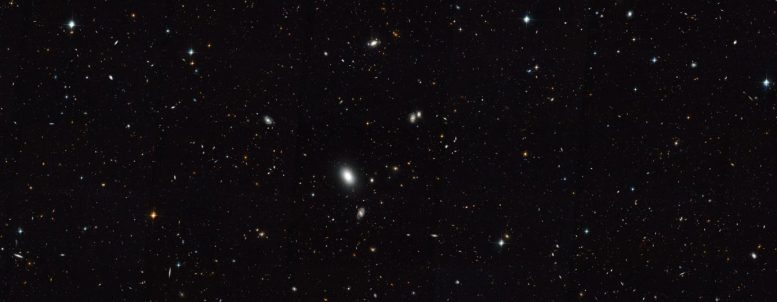
The CEERS Survey researchers will use the James Webb Space Telescope to observe the Extended Groth Strip in infrared light. Their observations employ three of the telescope’s instruments and will provide both images and spectra of the objects in the field — which includes at least 50,000 galaxies — helping to expand what we know about galaxies in the very early universe. Credit: NASA, ESA, and M. Davis (University of California, Berkeley)
Astronomers and engineers have designed telescopes, in part, to be “time travelers.” The farther away an object is, the longer its light takes to reach Earth. Peering back in time is one reason why NASA’s upcoming James Webb Space Telescope specializes in collecting infrared light: These longer wavelengths, which were initially emitted by stars and galaxies as ultraviolet light more than 13 billion years ago, have stretched, or redshifted, into infrared light as they traveled toward us through the expanding universe.
Although many other observatories, including NASA’s Hubble Space Telescope, have previously created “deep fields” by staring at small areas of the sky for significant chunks of time, the Cosmic Evolution Early Release Science (CEERS) Survey, led by Steven L. Finkelstein of the University of Texas at Austin, will be the first for Webb. He and his research team will spend just over 60 hours pointing the telescope at a slice of the sky known as the Extended Groth Strip, which was observed as part of Hubble’s Cosmic Assembly Near-infrared Deep Extragalactic Legacy Survey or CANDELS.

More than 13 billion years ago, during the Era of Reionization, the universe was a very different place. The gas between galaxies was largely opaque to energetic light, making it difficult to observe young galaxies. What allowed the universe to become completely ionized, or transparent, eventually leading to the “clear” conditions detected in much of the universe today? The James Webb Space Telescope will peer deep into space to gather more information about objects that existed during the Era of Reionization to help us understand this major transition in the history of the universe. Credit: NASA, ESA, and J. Kang (STScI)
“With Webb, we want to do the first reconnaissance for galaxies even closer to the big bang,” Finkelstein said. “It is absolutely not possible to do this research with any other telescope. Webb is able to do remarkable things at wavelengths that have been difficult to observe in the past, on the ground or in space.”
Mark Dickinson of the National Science Foundation’s National Optical-Infrared Astronomy Research Laboratory in Arizona, and one of the CEERS Survey co-investigators, gives a nod to Hubble while also looking forward to Webb’s observations. “Surveys like the Hubble Deep Field have allowed us to map the history of cosmic star formation in galaxies within half a billion years of the big bang all the way to the present in surprising detail,” he said. “With CEERS, Webb will look even farther to add new data to those surveys.”
Delivering the Unseen
What was the early universe like? There are certainly many data points, but not enough to create an exhaustive census of its conditions. Plus, researchers’ knowledge and assumptions are updated frequently — each time a new deep exposure is released. “Every time we look farther, we find galaxies earlier and earlier than we thought possible,” said CEERS Survey co-investigator Jeyhan Kartaltepe of the Rochester Institute of Technology in New York. “The conditions in the very early universe had to be right for galaxies to form — and they formed and became massive very quickly.”
“The universe was more compact at this time, which means stars and galaxies could have formed at a greater efficiency,” Finkelstein added. “Some models predict we’ll find 50 galaxies at earlier eras more distant than Hubble can reach, but others predict we will only find a few. In both cases, the data will help us constrain galaxy formation in the early universe.”
The CEERS Survey team hopes to identify an abundance of distant objects, including the most distant galaxies in the universe, early galaxy mergers and interactions, the first massive or supermassive black holes, and even earlier quasars than previously identified. These potential “firsts” are only the beginning of the value of this research: The team, which is made up of over 100 researchers from around the world, will go on to classify many objects in the field. “These data will help demonstrate what the structure of the universe was like at various periods,” Finkelstein explained.
Hitting “Rewind”
Perhaps the most exciting element of this research is how the team will use the data to uncover new findings about an important period of the universe’s history called the “Era of Reionization.” The big bang set off a series of events, leading to the cosmic microwave background, the dark ages, the first stars and galaxies — and then to the Era of Reionization. During this period, the gas in the universe transformed from mostly neutral, meaning it was opaque to ultraviolet light, and became completely ionized, which allowed it to be transparent. Ionization means the atoms were stripped of their electrons — eventually leading to the “clear” conditions detected in much of the universe today.
Many questions remain about this unique time in our universe. For example, what was responsible for converting the gas from neutral to ionized? And how long did it take before the universe became significantly less opaque and much more transparent?
“We think this happened when ultraviolet light escaped young, forming galaxies,” Dickinson explained. “There may be other factors. For example, early accreting black holes may also have emitted ultraviolet light that eventually helped transform the gas.”
Where the galaxies appear in the sky offers another clue. “We’ll examine reionization-era galaxies to see if they are clustered together in the same regions or if they are more isolated,” said Kartaltepe. “We have a lot of ideas about what causes galaxies to grow and become more massive, but we need more comprehensive information about these galaxies to fully understand how they initially grew and evolved.”
The presence of galactic mergers or interactions — or lack thereof — will also help the team trace the conditions of the environment during the Era of Reionization. “The CEERS Survey will give us hints about how this period proceeded,” Dickinson adds. “We will certainly learn about the galaxies we think are responsible, and also hope to learn about the ionizing radiation that escaped them.”
The team has designed the CEERS Survey to provide as much complementary data as possible for many targets in this field of view. They will employ three of Webb’s instruments, in several modes, to obtain images of the Extended Groth Strip, in addition to spectra. Spectra are invaluable data since they help researchers identify the colors, temperatures, motions, and masses of each target, and provide a much more in-depth look at the chemical makeup of distant objects.
“That’s the difference with Webb’s Near-Infrared Spectrograph, or NIRSpec,” Dickinson emphasized. “We’ll open the spectrograph’s microshutter slits to individually observe hundreds of galaxies to obtain their spectra for the first time.”
Beginning to Build a Census
In the months following the initial data release, the CEERS Survey researchers will create and post new tools and catalogs any researcher can use to analyze the data, including masses of galaxies, galaxy shapes, and photometric redshifts. “With the same set of observations, hundreds of researchers can conduct hundreds of science experiments,” Kartaltepe said. “We’re also going to find things we didn’t even think to ask, which is one more reason why the CEERS Survey research will be so rewarding.”
“Our hope is that the CEERS Survey will influence future distant galaxy surveys with Webb,” Finkelstein added. “It will also demonstrate to the community that observing with a variety of instruments and modes are very valid ways to increase Webb’s scientific yield.”
This research is being conducted as part of a Webb Early Release Science (ERS) program. This program provides time for the selected projects early in the telescope’s mission, allowing researchers to quickly learn how best to use Webb’s capabilities, while also yielding robust science.
The James Webb Space Telescope will be the world’s premier space science observatory when it launches in 2021. Webb will solve mysteries in our solar system, look beyond to distant worlds around other stars, and probe the mysterious structures and origins of our universe and our place in it. Webb is an international program led by NASA with its partners, ESA (European Space Agency) and the Canadian Space Agency.

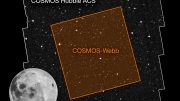

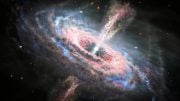
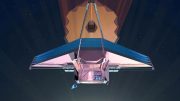
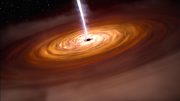
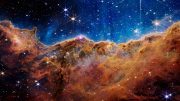
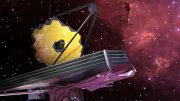
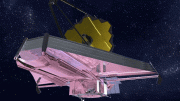
Great- a science article that pushes speculation rather than science.
Hows about we wait for the results before we start imagining them?! Y’know, the way any good scientist does…
Karl Popper put forward the idea that science should seek to disprove its theories. You show a chart purporting to show what you ‘KNOW’, I wonder, when the first data starts to come in, whether that is what you ‘KNOW’.